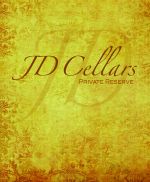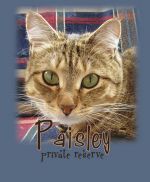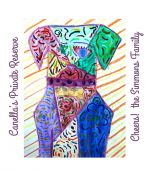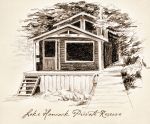

What? Whimsy in the wine world? I knew I could find it! So toss those berets aside and let’s take a look at the once old and now trendy darling of the younger set, Pétillant Naturel. Ok, maybe put the berets back on for a moment while we learn how to say this. Pay-tee-yawn Nát-yu-rell. Say three times and and toss hat. However, to make life even easier, we will henceforth refer to these wines as Pétillants or simply Pet-nats.
I was not familiar with Pet-nats at all. So while I was searching for a new topic to write about my trusty coworker, Janis, suggested this, as she had recently tried one and liked it. OK, I said, there’s my topic.
So, here we go.
Pétillant Naturel translates to naturally sparkling. We are all familiar with Champagne, but not so much with this kind of sparkling wine. It differs from the classic or traditional way Champagne, or any sparkling wine made in the classic manner, is made in several notable ways. When making sparkling wine in the traditional way, the grapes are fermented into a still wine, bottled with another small dose of yeast combined with sugar then capped and left to ferment once again inside the bottle. After the required aging time the sediment and dead yeast cells are expelled from the bottle in a lengthy process called riddling and disgorgement which clarifies the wine. After this, the bottle is topped off with more wine and something called the dosage which determines how sweet or dry the finished wine, now sparkling, will ultimately be. Quite the complicated process.
Pet-nats not so much with the complicated. These wines are made in the ancient way called méthode ancestrale. This method was invented several hundred years before the traditional method by the monks in Limoux France in 1531.
The basic process is this: the wine is bottled before the fermentation is fully finished. It is completely up to the wine maker’s discretion as to when in the process this might be. They determine how bubbly (remember carbon dioxide is a byproduct of fermentation and, when not released, is incorporated into the wine and this causes the wine to be “sparkling“) and how sweet or dry they want the end product. Sort of. This is the whimsical part. No one really really knows how a bottle will turn out! Wow! A lesson in giving up control and hoping for the best (kind of like with kids.)
Pet-nats never have any added sugars and only use natural ambient yeasts. They are unfiltered so the spent yeast is still in the bottle thus creating the common cloudy appearance and the sediment found in that bottle. This will also account for the “funkiness” found in some of the wines. Sometimes this will just blow off but sometimes, because of the way they are made, faulty bacteria might get accidentally introduced into the bottle. That said, most of these wines are not faulted; it’s just the way they are. Most Pet-nat producers are closely associated and aligned with organic, natural, sustainable and/or biodynamic growing methods. The use of SO2 is very limited. There is generally less pressure in the bottle (because the fermentation started earlier in the tank) and they usually have lower alcohol levels around 10-12%. Also, Pet-nats are closed with a simple crown cap similar to a bottle of beer or cider. They are basically a no interference sparkling wine just hanging out from the day it is bottled til the day it is opened. As I read somewhere, each bottle is its own ecosystem. I like to picture that idea. Doesn’t it remind you of solar systems?
Oh, one other thing, unlike the incomprehensible age of solar systems, they are not meant to be around forever. Drink these babies young. Young and cool. Like we all used to be.
 As to the grapes used in these wines, Pétillants are not legally bound. This means they can be made from any grape in any country or any region that grows any grapes. You would think that the French would be aghast at this. And you would be right. They do have their own few regions that use méthode ancestrale, indeed, must use méthode ancestrale, and must abide by the use of the legally approved grapes. If you would like to research or to taste these wines check out Blanquette de Limoux in southern France that may only use the grape Mauzac, also Bugey-Cerdon in the French alps, or Gaillac.
As to the grapes used in these wines, Pétillants are not legally bound. This means they can be made from any grape in any country or any region that grows any grapes. You would think that the French would be aghast at this. And you would be right. They do have their own few regions that use méthode ancestrale, indeed, must use méthode ancestrale, and must abide by the use of the legally approved grapes. If you would like to research or to taste these wines check out Blanquette de Limoux in southern France that may only use the grape Mauzac, also Bugey-Cerdon in the French alps, or Gaillac.
But getting back to the grapes used in the majority of legally unbound Pet-nats, they do seem to use more aromatic grapes than the more neutral, sometimes not quite ripe grapes of the more formal sparkling wines. And, as I said, any grape or creative blend of grapes is fair game. This makes for wines of any color, pale or intense, pink, copper, orange and even red. Wine makers are out there experimenting because they can. Unusual grape combinations abound that make for some really fun and interesting flavors.
Here’s an interesting note; because the initial and only fermentation continues to happen in the bottle these wines tend to get drier over time. In fact are usually quite dry by the time you open it. But, if you want to make absolutely sure that your wine is dry, put it in a warm sunny spot for a few days to encourage any remaining yeast to keep fermenting until all the sugars are gone. Then chill and drink.
So I think you’re getting the idea that Pétillants are not exclusive nor are they uniform in taste or style. These wines are just not too serious. Try them with your friends. Take them to garden parties. Or any parties. They would be perfect for a hot summer’s day picnic by the lake. Be aware these bottles are notorious for bubbling over so the outside idea is always a good precaution.
As to taste profile Pet-nats are meant to be refreshing and fizzy with some chalky mineral qualities. They feature fruity aromas and tastes like pear, lemon and apple. Best served chilled and in a wine glass not a flute. The bubbles are generally larger and dissipate more quickly than Champagnes.
What to serve with these casual bubbles? Casual food, of course. Try antipasti, cold cuts, light snacks, fruit salad, hot chips! Or simply as an apéritif.
And just because these wines don’t seem that serious doesn’t mean they can’t be taken seriously. Tasting them will broaden your palate and wine appreciation experience. So give them a try. I’m about to!
Savage Grace Pét-Nat 2022 Côt $35.00
Dineen Vineyard Rattlesnake Hills 10.5 % abv
Côt is the name Malbec goes by in the Loire Valley. According to the label Savage Grace makes their Malbec in a similar lighter style to what is grown there.
It’s appearance was cloudy in the bottle with a pale coppery peachy color.
So I popped the top and it did overflow with large gushing bubbles that reminded me of a bubble bath! It was bone dry and tingly on the tongue with lots of acidity. It reminded me of a refreshing cider. Apple-y, a little dry stone, a touch of tangerine and uncomplicated.
Bubbles From The Basement NV Müller-Thurgau $19.99
Albino Armani Veneto, Italy 11% abv
Light golden yellow in color and barely cloudy with very little sediment in the bottom of the bottle. Not much fizz upon opening but formed a lovely head of mousse in the glass even if short lived. Quite minerally on the nose along with grapefruit and some orange rind. It opens bright and tangy dry on the tongue followed by peach and apricot flavors and something like unripe watermelon. There’s a touch of not unpleasant bitterness on the finish that I rather enjoyed. I think it’s an Italian thing.
Vigne Sauvage Pétillant Naturel 2022 100% Souvignier Gris $19.99
Languedoc Vin De France 12.5% abv
As typical, this wine is made with no added sugar and yeast. But they state on the label they also only use naturally occurring sulfites. They also emphasize it is made from 100% Souvignier Gris. A grape I have never heard of. Briefly, it is a cross between Seyval Blanc and Zähringer developed in Germany in 1983. It is a representative of a group of fungus resistant grape varieties called PIWI.
The color was yellow with a slight copper cast. It also did not exhibit a lot of effervescence upon opening but had a deep layer of delicate mousse upon pouring it into the glass. It also had the longest lasting lingering tiny bubbles. I didn’t really agree with the noted descriptions. To me it had a funky and animal smell to it mixed with orange, green stems and wet stone. The funk blew off only to discover whiffs of sweet candy. This led to tastes of orange seeds, green apple, spring water minerality and a mild mintiness. I know this sounds weird but it was quite good. I liked this pet-nat the most of these three. It certainly was the most complex and it kept me coming back for more.
 Wrapping things up here, I would like to share this quote from noted wine critic for the New York Times Eric Asimov:
Wrapping things up here, I would like to share this quote from noted wine critic for the New York Times Eric Asimov:
“The flaws in some natural wines glare more because they are not typical in the modern age, when technology and artifice can eliminate issues like excessive volatile acidity or barnyard aromas that come from unwanted yeast strains. But to me, the tedious insipidity of many processed wines is just as much a flaw. Yet these pétillants, an almost completely random category where anything goes, showed very few flaws. They were not only easy, approachable and refreshing, the best had resonance, depth and length.”
Yeah, what he said.
In conclusion, this was a delightful new experience for me! So, of course, I think you should try some too. They were a fun alternative to having to think too much about what you’re drinking. And you won’t break the bank trying some out. How ‘bout it?
Yours in fun and wine adventure,
Peggy












0 Comments